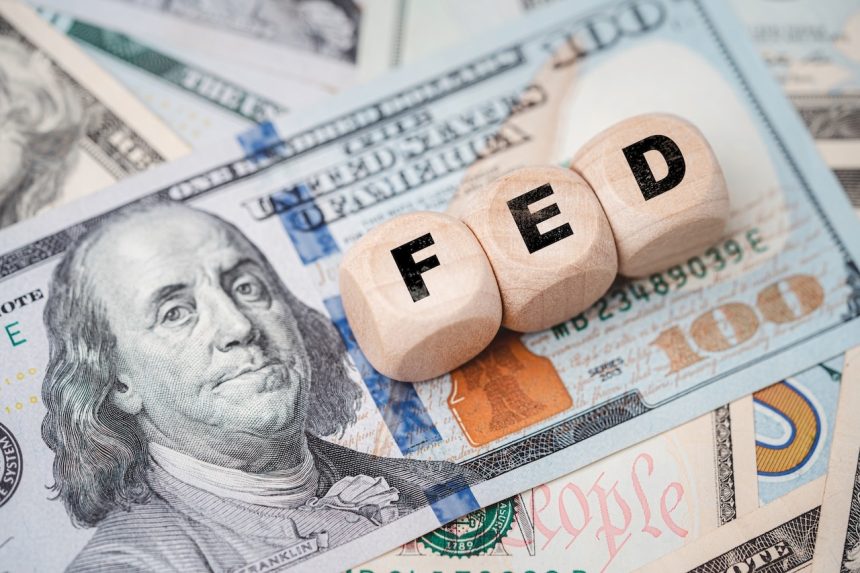Credit Sesame explains how the Fed interest rate outlook could affect your credit cards, borrowing costs, and ability to manage debt in today’s economy.
Six months ago, the Fed interest rate outlook pointed to lower borrowing costs. But that path has shifted. Inflation is rising again, economic growth is slowing, and the Federal Reserve’s latest projections suggest fewer rate cuts — or none at all. That change could make credit cards and other debt more expensive. Knowing how the Fed’s changing course affects you can help you take smarter steps to protect your finances.
Shifting signals from the Fed interest rate outlook
To understand how drastically the outlook for interest rates has changed, it helps to think back to how things were six months ago.
One of the bright spots for the economy was the falling inflation rate. The Consumer Price Index rose by just 2.4% for the year ending September 30, 2024, after having peaked at 9.0% in mid-2022. Since the Federal Reserve had previously cranked up interest rates in response to high inflation, the sharp drop in the inflation rate gave it room to start bringing rates back down.
The Fed made a 50-basis point rate cut in its September meeting. Following that meeting, it released economic projections that showed it intended to make a further 50 basis points worth of cuts by the end of the year and an additional 1% worth of cuts in 2025.
So what has happened since? Well, the only thing that has gone according to plan is that the Fed did follow through and make an additional 50 basis points worth of rate cuts in the final quarter of 2024.
However, inflation has reversed course and started rising again. The year-over-year inflation rate is now 2.8%. Worse, inflation has been running at an annualized rate of 3.8% since the end of September.
There may be worse news to come. Massive government layoffs and an escalating trade war have created an atmosphere of uncertainty about the economy. After meeting in March, the Fed released updated economic projections that showed how its outlook has changed. Since September, the Fed has raised its forecast for 2025 inflation by 0.6% and lowered its forecast for this year’s GDP growth by 0.3%.
Both of those developments could impact the Fed’s rate decisions and, in particular, the rates you pay on credit cards.
Rising credit risk could drive rates higher
The trend in recent months, plus the threat of new tariffs, could mean more upward pressure on prices. That would mean higher inflation.
If that happens, credit card companies will be inclined to keep their rates higher. Part of this is to keep their rates comfortably above the inflation rate. Another part of it is to protect against uncertainty.
The news on tariffs seemingly changes every day. It’s a complicated dynamic. With so many other countries involved, there are several potential sources of additional inflation depending on how they respond to US tariffs.
When in doubt, credit card companies are inclined to keep their rates on the high side to guard against the threat of inflation getting out of control. After all, the law limits how quickly credit card companies can raise their rates. That makes them more likely to respond to inflation risk by getting ahead of a rising price trend when possible.
How to manage borrowing in uncertain times
Inflation is not the only trend that could push prices higher. Consumer defaults are also a factor.
When credit card customers are late or miss payments, card issuers experience losses. This is known as credit risk. Credit card companies raise interest rates to cover that risk, particularly for consumers with lower credit scores or signs of financial instability.
The percentage of credit card balances with payments 90 days or more overdue is now the highest in 13 years. If the economy weakens, as the latest Federal Reserve projections suggest it might, that could get even worse.
With credit risk rising, credit card companies may respond by raising rates. In particular, customers with low credit scores will be most likely to see higher rates because they are deemed the most likely to miss payments.
Reduce or refinance before rates rise
Just as credit card companies have to guard against the possibility of rising inflation and credit risk, so should you. Those things could mean higher interest rates, making borrowing more expensive.
Reducing your credit card balances is the best way to protect against that. Keep borrowing to a minimum, and make every effort to pay off more than you borrow each month. Reducing those balances will reduce the interest you’re charged. As a side benefit, lower balances are good for your credit score. That could shield you somewhat from the higher rates charged to riskier credit card customers.
If you can’t pay down balances immediately, consider refinancing to decrease your interest costs. Personal loans, home equity loans, and balance-transfer credit cards are all possibilities for refinancing high-interest credit card debt. Just be sure to have a solid repayment plan before trying any of these options.
How to stay ahead of changing rates
The Fed’s latest projections suggest consumers may face higher borrowing costs for longer than expected. But you’re not powerless. By paying down debt, refinancing strategically, and improving your credit profile, you can reduce the impact of rising rates and protect your finances through uncertainty.
If you enjoyed Fed interest rate outlook: Why it matters for your wallet you may like,
Disclaimer: The article and information provided here are for informational purposes only and are not intended as a substitute for professional advice.
Read the full article here
















